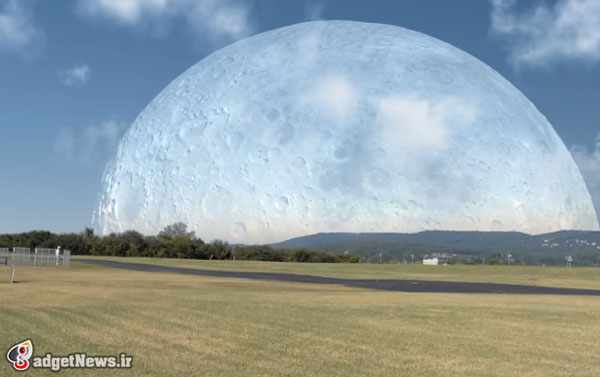
اگرماه نیز همانند ایستگاه فضایی بین المللی در فاصلهی 370 کیلومتری از زمین قرار داشت، شاهد چه منظرهای در آسمان بودیم؟ مسلما رصد چنین پدیدهای هیجانانگیز است، اما پیامد رویارویی زمین و ماه چندان مسالمتآمیز نخواهد بود.
میانگین فاصلهی کرهی ماه از زمین حدود 384,400 کیلومتر است. از سویی دیگر ایستگاه فضایی بینالمللی (ISS) نیز حول مداری با شعاع 370 کیلومتر، به دور زمین میچرخد. با قرار دادن کرهی ماه در چنین فاصلهی، شعاع مدار آن بیش از 1000 برابر کوچکتر خواهد شد. در ادامه میتوانید گوشهای از جلوهی بصری این رخداد را مشاهده کنید.
ماه نیز همانند خورشید همواره از شرق طلوع کرده و در غرب غروب میکند اما در صورت تثبیت مدار آن در چنین فاصلهای، سرعت گردش آن به دور زمین افزایش چشمگیری خواهد یافت و اندکی بعد شاهد طلوع ماه این بار از غرب و غروب آن در شرق خواهیم بود. با این حال، با فرض اینکه سرعت گردش ماه در این فاصله همانند ایستگاه فضایی باشد، گردش آن به دور زمین حدوداَ 90 دقیقه به طول میانجامد.
متاسفانه وقوع چنین پدیدهای با در نظر گرفتن حد «روچه» ممکن نیست; «حد روچه» حداقل فاصله مجازیست که یک قمر میتواند بدون فروپاشی ناشی از گرانش سیاره، در مداری حول آن دوام بیاورد. به این ترتیب قرار گرفتن ماه در فاصلهای 370 کیلومتری، موجب از هم گسیسختگی و فروپاشی آن شده و هر یک از اجزاء حاصل از این فروپاشی، در مدارهای مختلفی به دور زمین گردش میکنند; در این صورت، برخورد این اجزاء با زمین و در نتیجه نابودی این کرهی خاکی نیز امری محتمل خواهد بود.
منبع : petapixel
This is What the Sky Would Look Like if the Moon Was at the Same Distance as the ISS
We’ve shown off some interesting videos/photo series in the past that highlight different fictional skylines. For instance, you can see what it would look like if each of our solar system’s planets replaced the Moon, or if the Earth had rings like Saturn.
The video above shows another interesting scenario: this is what the sky would look like if the Moon was at the same distance from the Earth as the ISS.
First, some facts. The Moon normally orbits almost 239,000 miles away from the Earth. The ISS, on the other hand, orbits in what’s called low Earth orbit at about 230 miles up. As you might imagine, bringing the Moon that much closer to the Earth would have several interesting ramifications.
From a purely visual perspective, the Moon, which usually rises in the east and sets in the west, would now be orbiting much faster than the Earth rotates, and so would rise in the west and set in the east. Also, assuming it orbits as fast as the ISS, it would take it only about 90 minutes to make its way around.
Unfortunately, this wouldn’t be possible. As much as we hate to poke holes in the ending of Despicable Me, there is no way that the Moon could continue being, well, the Moon at this distance. Within what’s called the Roche limit, the Moon would simply break apart, forming a new ring system and possibly destroying the Earth in the process…
 گجت نیوز آخرین اخبار تکنولوژی، علم و خودرو
گجت نیوز آخرین اخبار تکنولوژی، علم و خودرو 





